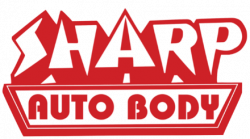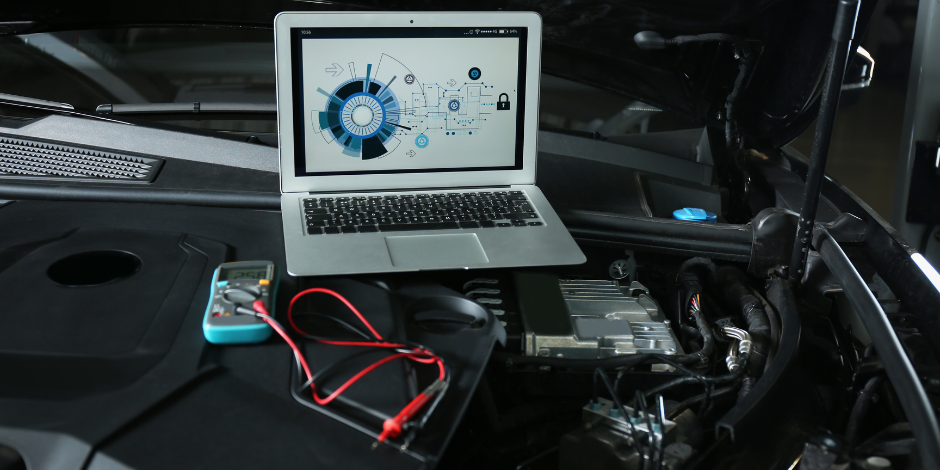We’ve already talked about the importance of airbags after a crash—but airbags are just one piece of your vehicle’s complex safety puzzle. Modern cars are loaded with advanced technology and interconnected systems, and even a minor accident can throw everything off balance. So, after any type of collision—even a low-speed fender bender—it’s critical to get a full inspection beyond the obvious visible damage. Here’s what you should get checked on your vehicle after an accident to ensure your safety and restore your car to proper working condition.
1. Driver Assistance Systems
Your car might look perfectly fine from the outside, but that doesn’t mean it’s functioning the way it should. Today’s vehicles come equipped with a variety of advanced driver assistance systems (ADAS), such as lane-keeping assist, adaptive cruise control, blind spot monitoring, and automatic emergency braking. These systems rely on a network of sensors, cameras, and radar units located throughout the vehicle.
Even a minor impact can disrupt or misalign these sensors, leading to system malfunctions or failures. If they’re not recalibrated or repaired properly, these features might not function when you need them most, potentially putting you and others on the road at risk. That’s why it’s important to have your vehicle’s ADAS thoroughly inspected and recalibrated by a qualified technician after a crash.
2. Diagnostic Trouble Codes (DTCs)
A visual inspection is not enough to detect all the damage after an accident. That’s where diagnostic scanning comes in. Reputable repair shops—especially those certified by the National Institute for Automotive Service Excellence (ASE)—will perform a comprehensive scan of your vehicle using factory-approved equipment.
This process reveals diagnostic trouble codes (DTCs) that may have been triggered during the collision, even if your dashboard warning lights are off. These hidden codes can indicate underlying issues with your car’s structure, electronics, airbag system, or powertrain. Without scanning, these problems can go unnoticed until they develop into more serious—and more expensive—repairs.
3. Suspension and Driveability
Whether your car was rear-ended, clipped a curb, or rolled over a hidden object, the impact can throw off your suspension system. If your car feels different after a crash—maybe it pulls to one side, shakes at high speeds, or makes unusual noises—it’s time to get it checked out.
Suspension and alignment problems affect not only your comfort but also your ability to steer and stop safely. Ignoring these signs can lead to tire wear, brake issues, and further strain on your vehicle’s components. Don’t take chances with your driveability—get a professional inspection and alignment check if anything feels off.
4. Seat Belts
Seat belts are another critical safety system that may need replacement after a crash. If your airbags deployed during the accident, your seat belts likely absorbed a significant amount of force. The impact can stretch the seat belt webbing, damage internal components, and trigger fault codes in the restraint system.
In many cases, replacing the seat belts is just as important as replacing the airbags. Faulty or damaged seat belts won’t provide the protection you need in the event of another crash. Make sure your repair shop inspects and, if necessary, replaces your seat belts as part of the post-accident repair process.
5. Post-Repair Verification
Once all repairs are completed, your technician should perform a final scan of the vehicle to ensure all diagnostic trouble codes have been cleared and the vehicle systems are fully operational. This final step helps catch any lingering issues that may have been overlooked earlier.
A reputable shop will also walk you through the completed repairs. They should take the time to show you what was fixed, explain any replacement parts, and answer any questions you may have. Transparency builds trust—and peace of mind.
Trust Sharp Auto Body to Get It Right
At Sharp Auto Body, we don’t just fix dents and paint scratches—we ensure your entire vehicle is road-ready and safe. We work directly with your insurance company to make sure all necessary systems are inspected, repaired, and verified according to manufacturer standards. From ADAS recalibrations to hidden trouble code scans, we’ve got you covered.
Your safety is our top priority. After an accident, let Sharp Auto Body take care of your car—so you can get back on the road with confidence.








